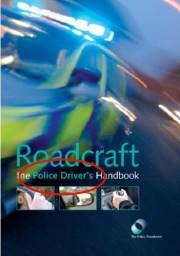I went to a good show last night at the Nottingham Arena – Slash, with Myles Kennedy and the Conspirators.
 It’s becoming a bit of a trend, but the support band – The Treatment – were pretty damned good. I suppose someone like Slash is only going to have decent support, so maybe it shouldn’t come as such a surprise (I just think back to the past, where the bands supporting some pretty big names were not as good as they should have been).
It’s becoming a bit of a trend, but the support band – The Treatment – were pretty damned good. I suppose someone like Slash is only going to have decent support, so maybe it shouldn’t come as such a surprise (I just think back to the past, where the bands supporting some pretty big names were not as good as they should have been).
Anyway, they were good enough for me to have ordered their debut album.
They’re a 5-piece British band from Cambridge and I believe that they’re all just 18-years old. As their Facebook page says, they are like early UFO and Def Leppard with a big dose of Aerosmith thrown in. Even before I’d looked them up, the lead singer in particular reminded me of Steven Tyler from Aerosmith in his style and singing abilities – he has a great voice.
OK, the band DID look young, but a year or two will probably fix that! Hopefully they’ll keep at it, because they could definitely go places if they do. In fact, they are playing Rock City at the end of March and I might go if I can arrange lessons around it.
Slash and the band came on to a tumultuous reception, and kicked off with “Halo”, from his latest album “Apocalyptic Love”.

It was one of the loudest gigs I’ve been to in a long time. My ears are still ringing even now. But the sound was excellent and the showmanship excellent. My mate who was with me commented on the backdrop and simple light rig before the show started – no video screens and just basic coloured floods, with a large sheet depicting what could have been a tattoo design. But as I pointed out, no amount of lights can make up for crap music and poor sound – and I was proved right, as the music was what really mattered here.
 Myles Kennedy has been working with Slash for some time now, and the result has been pretty impressive from what I’ve heard on Planet Rock. Kennedy has a tenor voice which apparently spans four octaves, and is otherwise known as one of the members of Alter Bridge. I was impressed by how good he sounded live.
Myles Kennedy has been working with Slash for some time now, and the result has been pretty impressive from what I’ve heard on Planet Rock. Kennedy has a tenor voice which apparently spans four octaves, and is otherwise known as one of the members of Alter Bridge. I was impressed by how good he sounded live.
Another eye-opener was the band’s bassist. For most of the night I was convinced he was Taylor Hood – the lead singer with Crown Jewel Defense (another support band I was hugely impressed with, and who I’m keeping my eyes on). But I was wrong, even though he is the spitting image. He’s actually Canadian, Todd Kerns.
The eye-opening part was his vocals on the Guns’n’Roses covers that were played at the end of the show. He might look like Taylor Hood, but he sounds just like Axl Rose, and has a superb range.
Frank Sidoris on rhythm guitar and Brent Fitz on drums completed a solid line up.
They played a total of six songs from “Apocalyptic Love”, and a few from Slash’s first album – including my favourite, Starlight, due to Kennedy’s vocals. What I personally liked was the extended guitar solos – I could listen to those all night.
Nottingham Arena is an OK venue, but they overdo it a bit with the queuing system outside. I haven’t figured out yet why it was “women to the left, men to the right” – they actually forced couples to split up and queue separately, which was bloody ridiculous. It may have had something to do with that prat of a doorman who really liked the sound of his own voice.
It was cold outside, and they took bloody ages letting people in. Then there was the exorbitant price of the drinks – £4 for a pint of gnat’s piss lager, most of which was pre-poured to try and speed things up. I can’t figure out why these places can’t have proper beer taps on the counters, but instead choose to install useless, slow-pouring systems in backrooms which necessitates this wasteful “teamwork” (I reckon that at least four people were involved in serving each pint I bought).

Then there were the people – oh, how I love some of the people who attend these events.
There you are, standing in the queue to buy beer, with dozens of pints standing ready on the counter behind the bar. Unfortunately, every prat in front of you wants something else. Why? A pint of Stella was £4, but a bottle of Stella was £3.80. Of course, you aren’t allowed to have an actual bottle in your hand, so they have to pour it into a glass – and that takes time. And then you’ll get the “couple”. The stupid cow of the duo will inevitably not want beer, and will try to order something else. You’ll see her making hand gestures as if to say “just a small one”, and the bar person will be standing there listening, only to shake his head. For Christ’s sake, people, all the damned drinks are listed on the board, so why do you insist on trying to order something that they don’t have. It’s not a bleeding nightclub you’re in, and they don’t do Baileys or anything other than the cheapest wine.
 And an annoying trend at these gigs is the growing tendency to try and create a “mosh pit” by people who are only just out of nappies. You get young males who suddenly, and without warning, try to charge through people as if they’re not there (I grabbed one and threatened to smack him if he did it again. He wasn’t so big after that, and slunk away). Trust me, children, grown ups at grown up concerts don’t do mosh pits. And I certainly don’t.
And an annoying trend at these gigs is the growing tendency to try and create a “mosh pit” by people who are only just out of nappies. You get young males who suddenly, and without warning, try to charge through people as if they’re not there (I grabbed one and threatened to smack him if he did it again. He wasn’t so big after that, and slunk away). Trust me, children, grown ups at grown up concerts don’t do mosh pits. And I certainly don’t.
 With one or two of them, as they began running into people, you could almost see that they’d got an erection out of it. Bloody juveniles.
With one or two of them, as they began running into people, you could almost see that they’d got an erection out of it. Bloody juveniles.
But all that aside, it was a great night. And as you can see I got some good photos out of it being close to the front. All followed by a very decent curry (as usual) at the Mogal-e-azam up by Rock City.
 Anyone who has a copy of this should occasionally turn around and make sure they haven’t let reality slip out of their sight.
Anyone who has a copy of this should occasionally turn around and make sure they haven’t let reality slip out of their sight. Well done to Laura, who passed today first time with just one driver fault (so nearly a clean sheet).
Well done to Laura, who passed today first time with just one driver fault (so nearly a clean sheet). Another belated one, but well done Jack, who passed with just 5 driver faults (in spite of those habits you got off your mum!)
Another belated one, but well done Jack, who passed with just 5 driver faults (in spite of those habits you got off your mum!) Well done to Lucy, who passed last week with just four driver faults.
Well done to Lucy, who passed last week with just four driver faults.